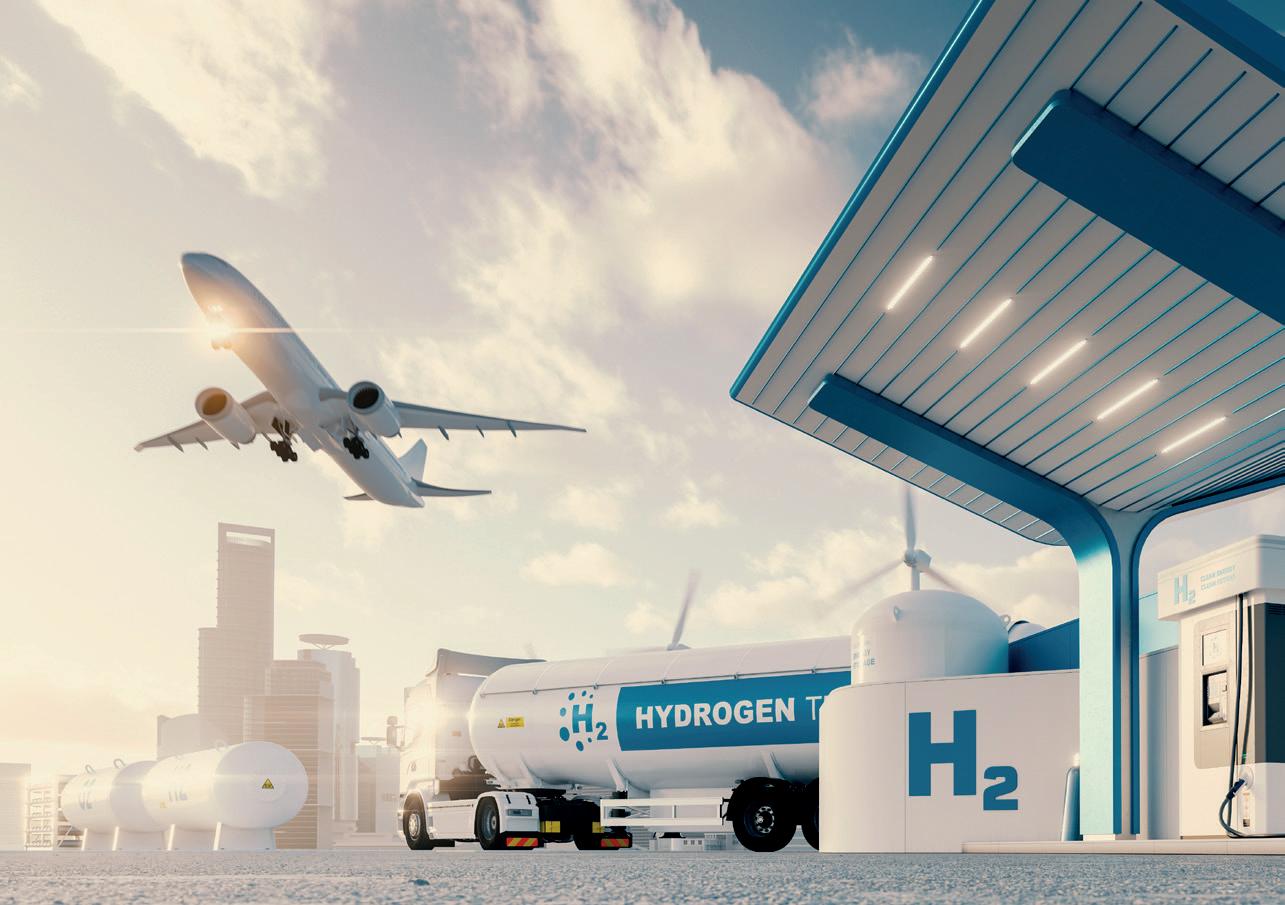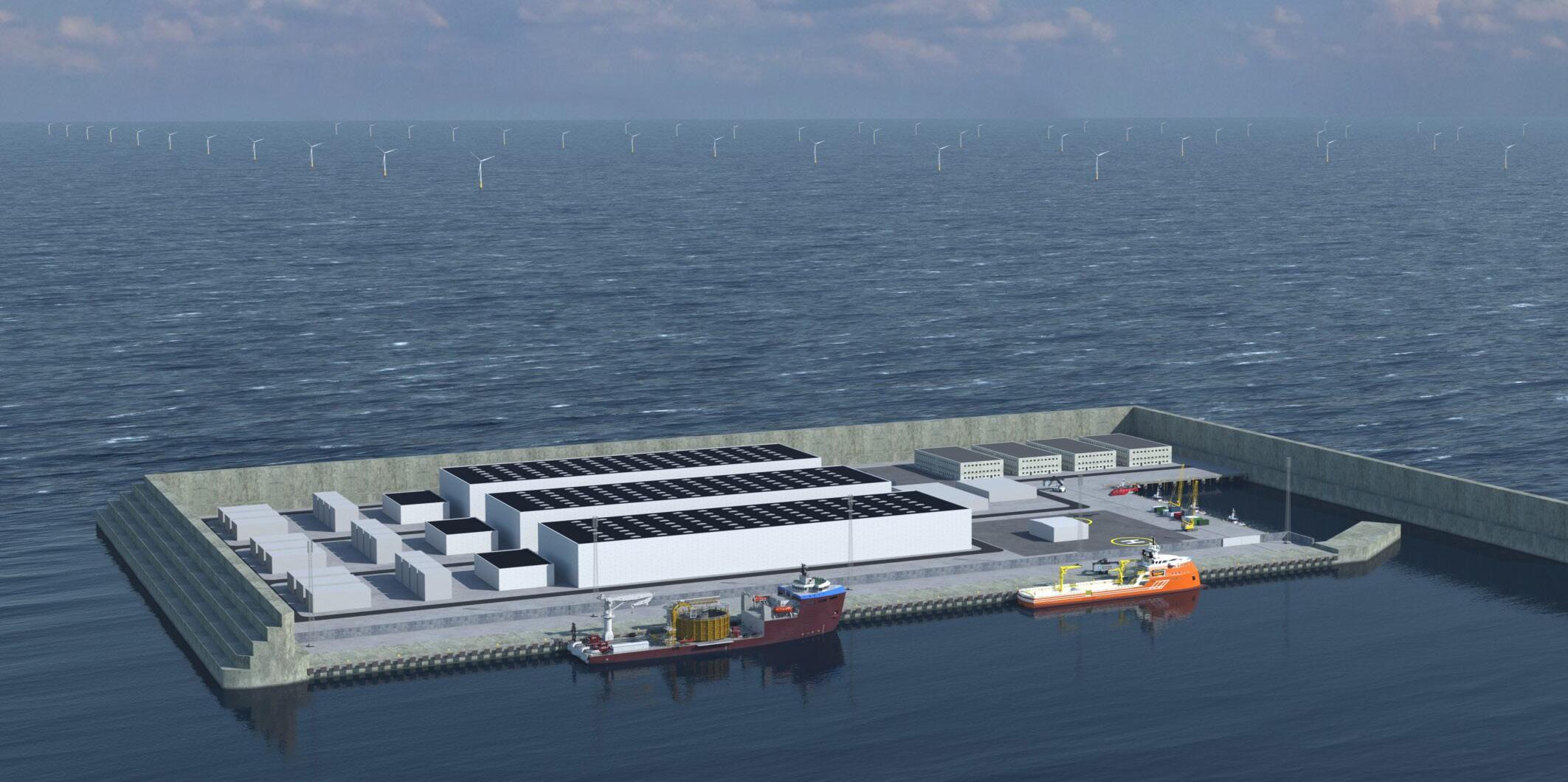
6 minute read
COST DRIVERS
from HIL ISSUE 15
WHICH COST DRIVERS SHOULD THE SECTOR USE TO CALCULATE LCOH?
by Floyd March
Advertisement
The levelised cost of hydrogen is in constant discussion across the hydrogen sector and is an increasingly used methodology when looking at the business case for hydrogen production and final investment decisions.
Building on this, and the significant influence high-level studies have on key decision makers in the hydrogen sector, Agora recently released their levelised cost of hydrogen report that focuses on making the application of the LCOH concept more consistent, and more useful.
While there has been an increased use of said methodology, the calculations involved in the LCOH must be consistently performed. This includes the same system boundaries and cost drivers.
The report highlighted: “If the selection of system boundaries is unclear in different studies, policymakers may draw the wrong conclusions. For this reason, Agora Industry commissioned umlaut to investigate the system boundaries and cost drivers used in high-level studies in calculating the levelised cost of hydrogen.”
Certain cost drivers impact LCOH more than others
One of the findings was that how system boundaries are dealt with in high-level studies varies and that consequently a sufficiently transparent description of the LCOH calculation in terms of system boundaries and cost drivers is not given.
Some cost drivers have a negligible impact on LCOH and can therefore readily be omitted, while others are very significant and must be taken into account. Further investigations were therefore carried out in which cost drivers were classified according to their importance. While the discount rate, electricity costs, the costs for engineering, procurement, and construction (EPC), the costs of the stack, the expected lifetime and the balance of plant (BoP) are among the major cost drivers, the costs of cooling, gas purification and water treatment are classified as minor cost drivers.
Comparison of system boundaries and other cost drivers in high-level studies on LCOH*
The classification of cost drivers is shown in Figure 1. To ensure consistent LCOH calculation in future studies, recommendations are made here for a pragmatic approach to the calculation which can provide orientation in the preparation of studies.
Authors of the report explained: “The recommendations include that revenues that can be recovered from the sale of the by-products oxygen and wasteheat should be excluded from the LCOH, as should funding, since both are strongly contingent on individual project setups. For the calculation of the LCOH, the total energy demand of the electrolyser –including auxiliary power – should be considered.”
Additionally: “The costs for buildings and foundations must also be included in the calculation. However, the costs of land should not be considered. It should be assumed that the necessary connections to the electrical and water grids are already in place and that the electrolyser can be connected directly.”

Examining the system boundaries is an essential step in ensuring that a consistent LCOH can be established. For example, the calculation of the LCOH may or may not include costs for land, buildings, and EPC.
The approach may vary from study to study, and often the selection of system boundaries or the exclusion of cost drivers is not transparently presented. In the bulk of the literature, the researchers highlighted that no relationship is drawn between the application of a system boundary and costs.
Result of meta-study on LCOH: Classification of Cost Drivers
Revenues from selling by-products: oxygen, heat**
Umlaut (2023). *Generic term. BoP. There is no standard definition of BoP, but it typically includes power supply, water conditioning, and process utilities like pumps, process-value-measuring devices, and heat exchangers. **Despite their importance in real projects, the revenues from the sale of oxygen and heat as well as funding are not included in the consideration as they are not cost components.
The factors briefly described below are included in the evaluation shown in Figure 2, above but include the following:
1 | Efficiency: Is the efficiency or the specific energy demand of the system given, and is its influence on the LCOH described properly? For example, is the total auxiliary consumption taken into account in the specific energy demand, and are reference points specified?
2 | Electrical components: Are power electronics completely or partially included?
3 | Stack lifetime and replacement costs: Is the lifetime mentioned? Is stack degradation considered, and are costs for stack replacement given?
4 | Pressure: Is the pressure in the electrolyser and at the hydrogen outlet specified? Is a distinction made between internal and external pressure, and is the influence on the LCOH analysed?
5 | Purity: Is the hydrogen gas quality specified and is its influence on costs given?
6 | Water: Are the type of water supply and any necessary water treatment specified?
7 | Greenfield or brownfield: Has a distinction been made between new facilities on previously undeveloped land and projects on land with existing facilities?
8 | Mode of operation: Is any information given on whether the electrolyser is operated at nominal or partial load, whether it is an island network, and whether it is operated flexibly?
9 | Storage: Is on-site storage considered, and if so, what is the storage capacity taken into account?
10 | Engineering, procurement, and construction: Is EPC included in the LCOH? And if so, what value is assumed?
11 | Transport infrastructure: Are costs for on-site transport infrastructure considered, or are connections already available at the electrolyser?
12 | Other Balance of Plant (BoP): Are costs for other balance of plant components or contingencies specified? BoP typically includes power supply, water conditioning, and process utilities like pumps, process-value-measuring devices, and heat exchangers.
Visual indicators of the influence on LCOH
From the twelve cost drivers to consider that have been indicated above, figure 3 highlights the influence of overarching cost drivers that can change, highlighting the importance of using the correct methodology for LCOH.
Agora give recommendations on specific cost drivers
The report then spent significant time giving recommendations on each specific classification of cost drivers beginning with the recommendation the costs for EPC are included in the LCOH.
Illustrative calculation of the four overarching cost drivers, and relevant assumptions
In the example on the right, a scenario with relatively high CAPEX (1.700 Euro/ kWel) and low electricity costs (0.02 Euro/ kWh) is shown. In the example on the left, relatively low CAPEX (800 €/kWel) and high electricity costs (0.07 Euro/ kWh) are assumed. Otherwise, the same assumptions apply.
The report expanded on these examples: “It can be observed that the influence of the cost drivers can vary strongly. More interesting for the development of the pragmatic approach, however, is the discussion of the other more detailed cost drivers, which have already been addressed in the section above.”
Agora Industry
Despite the inclusion of EPC within the LCOH, the report concluded that contingency costs should not be included in the LCOH as: “They are not usually considered in high-level studies, and can also vary considerably.”
As buildings, including foundations and land, are essential for the construction of an electrolyser, it would be expected that they would be involved in the LCOH. However, the report argued that: “Data gathering for this is challenging, especially when comparing properties in different countries and rural as well as urban locations. This recommendation is also in line with the objective of our study to identify and provide reasonable simplifications for future cost comparisons of LCOH.”
With regard to the connection of the electrolyser plant to the electrical network, it is assumed that an existing network is available and that the electrolyser can be connected directly to it. About electricity costs, everything the operator of the electrolyser has to pay must also be included in the calculation of the LCOH.
The same is applied to the water supply element unless a seawater desalination plant has to be built to supply the electrolyser with water. This should also be included in the costs.
Due to the multiplicity of further potential applications, the costs for the subsequent use or transport of hydrogen cannot be easily taken into account, and are therefore omitted from the calculation in the pragmatic approach.
Moving on, If LCOH calculations are made using the reference pressure of 30 bar but the electrolysers investigated operate at lower internal pressures, additional costs should be included in the LCOH via the entries for the cost of the compressor, its efficiency and pressure ratio.
The report concluded: “We recommend including the stack replacement costs in the CAPEX. For this purpose, the actual lifetime of the stack has to be calculated from the lifetime specified by the manufacturer as well as from the full load hours of the electrolyser.”

The recommendations include that revenues that can be recovered from the sale of the byproducts. Oxygen and waste-heat should be excluded from the LCOH, as should funding, since both are strongly contingent on individual project setups. recommendations include that revenues that can be recovered from the sale of the by-products. Oxygen and waste-heat should be excluded from the LCOH, as should funding, since both are strongly contingent on individual project setups.








